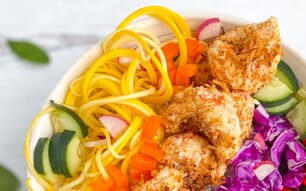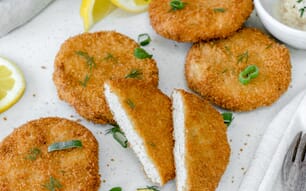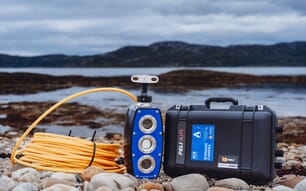
© BlueNalu
Can you give a brief overview of BlueNalu’s approach to cell-cultured seafood?
Before we even begin the process, we have a species selection strategy to determine what fish we’re working on and why. After the species selection process, we source the species and then isolate the appropriate cells.
So, this could mean literally isolating a precursor muscle cell, fat cell or connective tissue cell from a fish like mahi mahi, red snapper or bluefin tuna. After we isolate the cell, the team bathes it in our own formulation of animal component-free amino acids, salts, sugars, lipids and other nutrients to encourage the cell to divide and keep dividing indefinitely. Once we’re able to keep the cell dividing and dividing, we create a stable cell line.
What we found was that no one had really propagated fish cells before and the knowledge was on the mammalian side. There was very little knowledge around seafood and the existing work focused on aquarium and non-commercial fish. We had to develop stable cell lines of high-value fish species, which was a unique challenge, but one that we accomplished.

From there, we begin growing those cells in bioreactors – these big stainless-steel containers that make the facility look like a microbrewery – where the cells are being bathed in these nutrients and are blended together in the appropriate proportions to really show the same characteristics as conventional seafood. So, they have same nutrient profile, the same functional profile, they cook the same – they are the same – they’re just made outside of the body in a new way.
What combination of cell structures is BlueNalu trying to cultivate?
So, when you’re eating a fish fillet on your plate, you might say to yourself, “that’s a really lean fish,” or “that’s a really fatty fish” or “I love that mouthfeel and that texture,” – what you’re describing in an indirect way is the composition of the muscle cells, the fat cells and the connective tissue cells.
BlueNalu is focusing on finfish fillets instead of the ground and formed or blended products. To go full cell-cultured would be the holy grail. For blended products, you take the cell-cultured materials and form a paste-like product and mix them with plants and then fry them – there’s definitely a market for that. But we felt that it was more commoditised and that it competes with plant-based products.
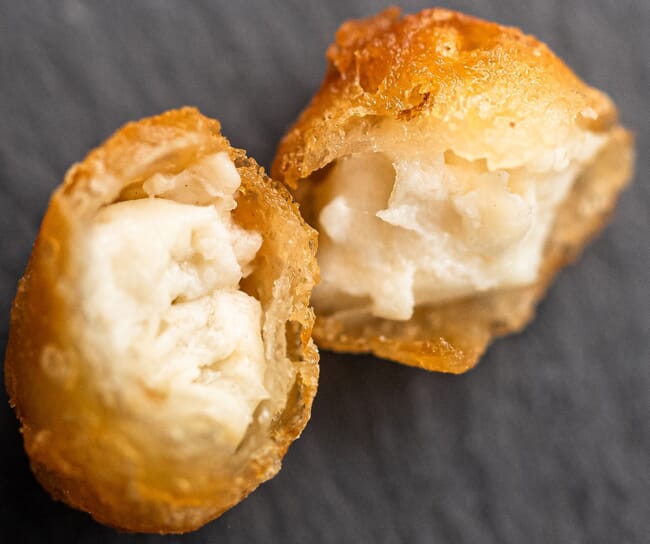
© BlueNalu
Fillets are an area where we felt we could make a huge difference. This lets us target the higher value part of the animal that commands a premium and that might be associated with higher levels of mercury or overfished populations. We also wanted to go the extra step and give consumers the same experience as the conventional product. When we prepared our yellowtail amberjack a year-and-a-half ago, the product performed the same: it cooked, caramelised and smelled like seafood – just made differently.
Why did BlueNalu decide to culture seafood instead of a different animal protein?
From a technology standpoint, we felt that it would be easier to bring a fish fillets to market. The easiest way to explain it is that you can cut fish with a fork, but you have to cut meat with a knife. The tissue structure of red meat is very complex, less so in chicken, even less so in fish. Red meat is marbled, it changes colour when you cook it: it’s a very complicated structure.
Fish, in comparison, is less complex. There are consistent layers of tissue and in some cases, the tissue is homogeneous. We thought it would be simpler – but still challenging – to achieve cell-cultured fish with current food industry technologies than pursuing red meat.
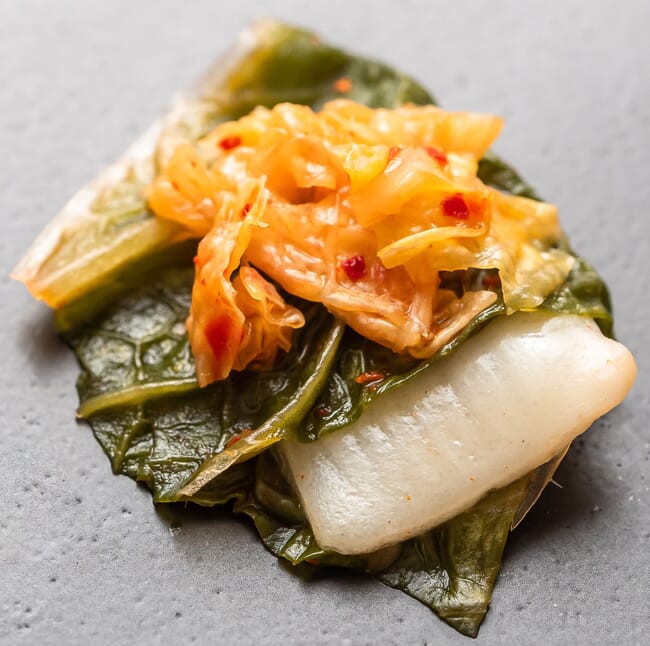
© BlueNalu
So, we made a strategic decision to culture a higher-value fish species and focus on the fillet. Right now, our main commercial focus is bluefin tuna and mahi mahi. We’ve also worked on red snapper and yellowtail amberjack.
How would you choose to label the fish that BlueNalu produces?
We recognise that at the FDA and at other agencies around the world, labelling is an important issue. From my perspective, it’s important that consumers know what they’re buying.
I think part of the problem is that people are using terms that are pejorative – “slaughter-free” or “clean” or “lab-grown” – and all of these are wrong for one side or the other.
I know that the regulatory authorities want a name where people not only know what it is, but they know what it is not. It’s very important that this is not mis-represented in people’s minds. It’s important that they know that they have an identifier that shows that it’s different from wild-caught and farm-raised seafood.
I’m proud to say that BlueNalu demonstrated global leadership in that area, because there was no answer to that question until very recently. We collaborated with the National Fisheries Institute (NFI), and we also sponsored research by Dr Bill Hallman. In that study, we used seven different terms and three controls that were neutral and that were “process centric” – so, “cultivated”, “cultured”, “cell-cultured” and “cell-based.”
We found that two names performed well: “cell-cultured” and “cell-based”. The words “cell” and “culture” were very important because people understood what they meant. Dr Hallman’s study is the only research that’s been peer reviewed to date, and it’s published in the Journal of Food Science.
What’s been the reaction from consumers?
When I started the company, I asked myself the same question: why seafood. Not only is there a fundamental supply chain gap with a species that is overfished and illegally fished, but there are other issues that are highly salient to consumers. Consumers are concerned about mercury levels in seafood, microplastics and environmental pollutants. We found that consumers that loved seafood would be highly motivated to try BlueNalu because they’re aware of these pitfalls in wild-caught fish.
We found that where there’s the greatest amount of awareness about seafood, there’s also the greatest amount of concern. People love eating seafood, but they’re also confused: is this sustainable? Is wild better than farmed? A lot of times, it’s difficult to know the right answer.
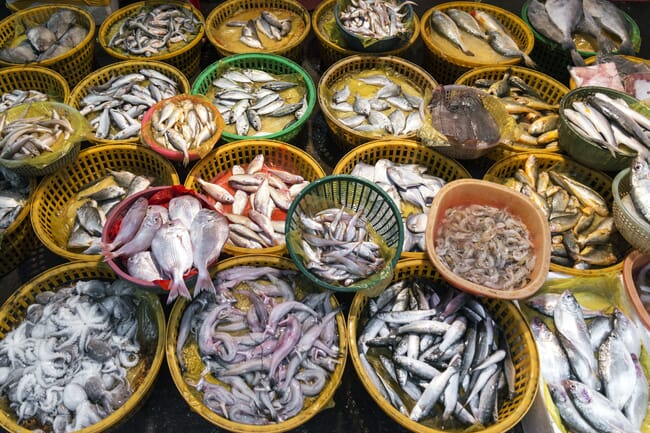
Because of this, we believe that there will be a level of trust and comfort with BlueNalu cell-cultured products because it is consistent every time and it does not have mercury, microplastics or any pollutants.
From the food service side, we learned that what really resonated with them was the word “consistency”. Food service operators experience a variable supply chain. They can’t always trust that their suppliers will have products. They’re constantly asking questions like “will my supply arrive on time?”, “Will it be fresh?”, “What will it yield?” There’s a reason it says, “market price” for some cuts of fish on the menu: it’s code for “I don’t know”.
BlueNalu is supplying a 100 percent yielded product, just the fillet, no bones, no skins, no cross contamination from fish skin, from a trusted supply that’s available on demand and that’s not restricted by supply.
How do you see the cell-cultured space evolving in the next five to ten years?
I think there will be considerable change in the next five to ten years. What you’ll see now is companies across the world entering their pilot phase. The pilot phase is critical because it is getting products manufactured in a hygienic environment and meeting regulatory and safety requirements.
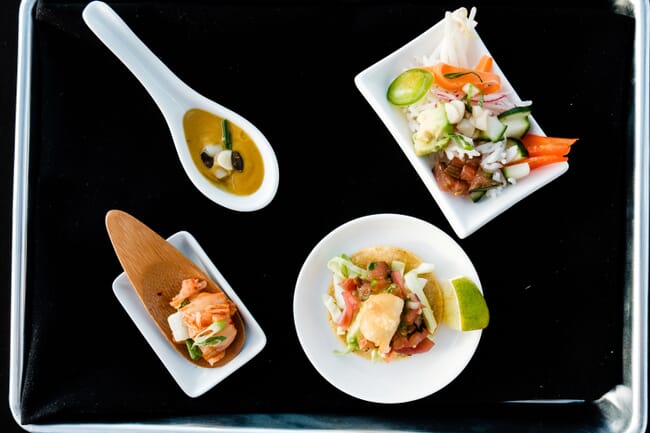
© BlueNalu
Companies in the cell-cultured space are producing small volumes of seafood and demonstrating safety. That gives investors a great deal of optimism and we all feel like it’s only a matter of time.
In ten years, I think we’ll be seeing factories producing cell-cultured seafood and their markets will be restaurants and in some cases retail. 2030 is going to be the beginning of logarithmic growth in this whole category. Before then, you’ll see small-scale factories going up, with some limited market share. But from 2030 on, I think you’ll see rapid growth and, in our case, the ability to supplement the global supply chain gap as demand increases and supply remains relatively flat. We’re hopeful that cell-cultured seafood can really supplement that gap that’s coming upon us.
A lot of analysis says that cell-cultured seafood is geared towards wealthy or middle-class consumers who are health-conscious and animal-welfare conscious. Do you think that cell-cultured seafood will ever be available for the wider population?
It’s my goal, and the goal of my co-founders, to democratise this product for the wider population and make it accessible. The reality is that when you’re beginning, you have a very limited supply. We’re producing tiny volumes of cell-cultured seafood and it’s costly.
In our case, bluefin tuna presents an opportunity. We want to make it accessible to all, so we’ll start with a cell-cultured product that has a similar price point to conventional bluefin tuna. We see that price going down over time.
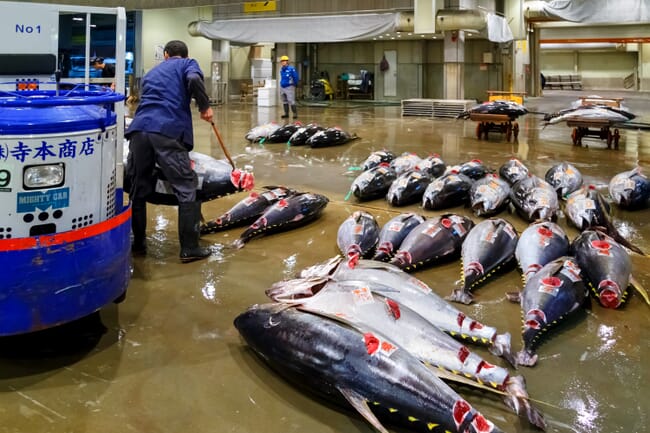
What we’ll eventually see is economies of scale enter into the raw materials side. The reason that it’s so expensive today is that the raw materials are ridiculously priced – our inputs have to be pharmaceutical-grade.
As the cell-cultured companies get smarter and migrate from pharma-grade to food-grade, we can increase our production volumes and move from sourcing raw materials by the gram to supplying them by the truckload instead. When that happens, the cost will go down dramatically. This is a volume-driven game, more than anything I’ve ever seen.
As volumes of our products increase, our supply chain costs will go down considerably. From there, yes, I think it will be accessible to all. We just need to reach that point of volume. We can then move from Western countries to less-developed countries over time. That’s a very real opportunity.

